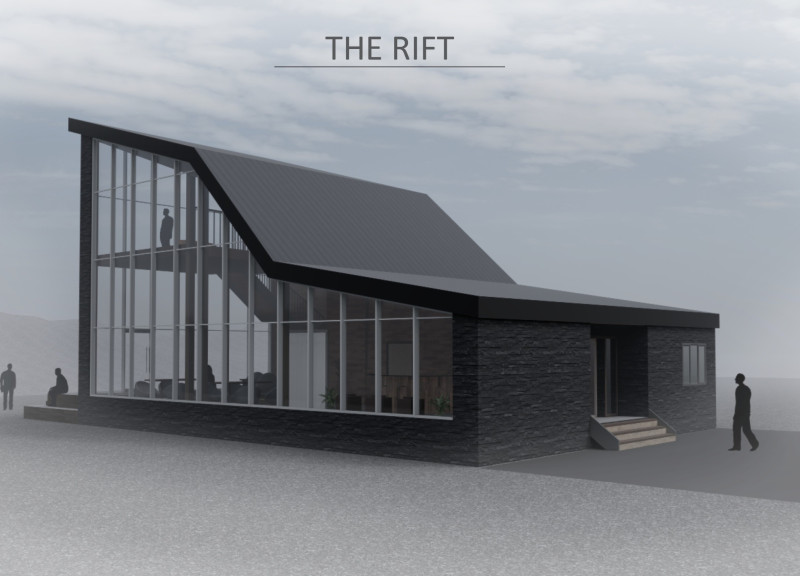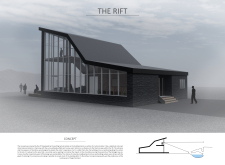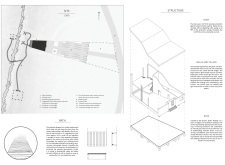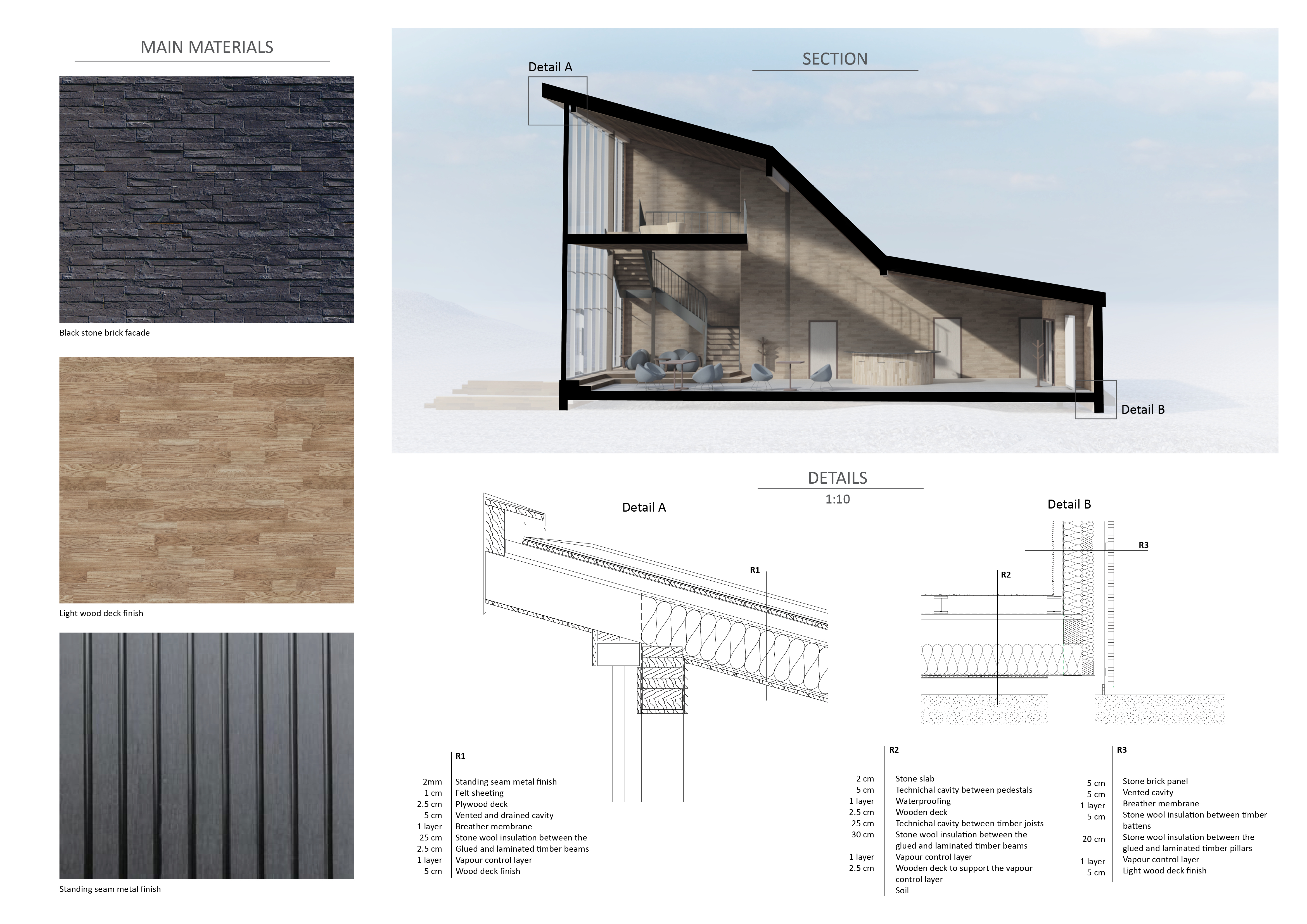5 key facts about this project
The design situated in Iceland connects to the local geology, specifically the rift caused by tectonic plate separation. It serves as an educational space for visitors exploring the nearby Karlagjá caves, creating opportunities for learning and interaction. The concept reflects the characteristics of tectonic plates, using shapes and materials that link the structure closely to its environment.
Conceptual Framework
- The overall theme of the rift is evident in the building's design, which engages with its landscape. The exterior is marked by a dark, stone-like facade that aligns with the natural lava fields, promoting a relationship between the built structure and the surrounding geology. This design functions as a practical guide for visitors while emphasizing the connection between architecture and nature.
Functional Arrangement
- Within the building, a thoughtful layout enhances visitor experience through a well-defined flow of spaces. The ground floor features a reception area, exhibition space, and cafe, all designed to facilitate social interaction and provide necessary services. Upon entry, visitors encounter a welcoming atmosphere that encourages them to learn about the geological importance of the site. An outdoor terrace extends the experience, creating a comfortable connection with the outside environment.
Elevated Experience
- The first floor includes an observation platform that offers visitors a different view of the rift. This raised area allows for reflection on the geological features in a new way. Elevating the structure also reduces impact on the delicate terrain below, ensuring the preservation of the local ecosystem, which is essential in this natural setting.
Material Choices
- Materials selected for the structure include a black stone brick facade, light wood finishes for the interior, and a standing seam metal roof. These materials highlight a focus on durability and sustainability. The strong stone facade can withstand the harsh Icelandic weather while blending with the local geology. The warm wood adds comfort indoors, and the metal roof is built for longevity and requires little upkeep.
The roof's design creates clean lines, and the combination of materials enhances the visual presence of the building against the rugged landscape. Attention to detail results in a clear connection between natural forces and architectural design, providing a place for understanding and appreciation of the environment.






















































